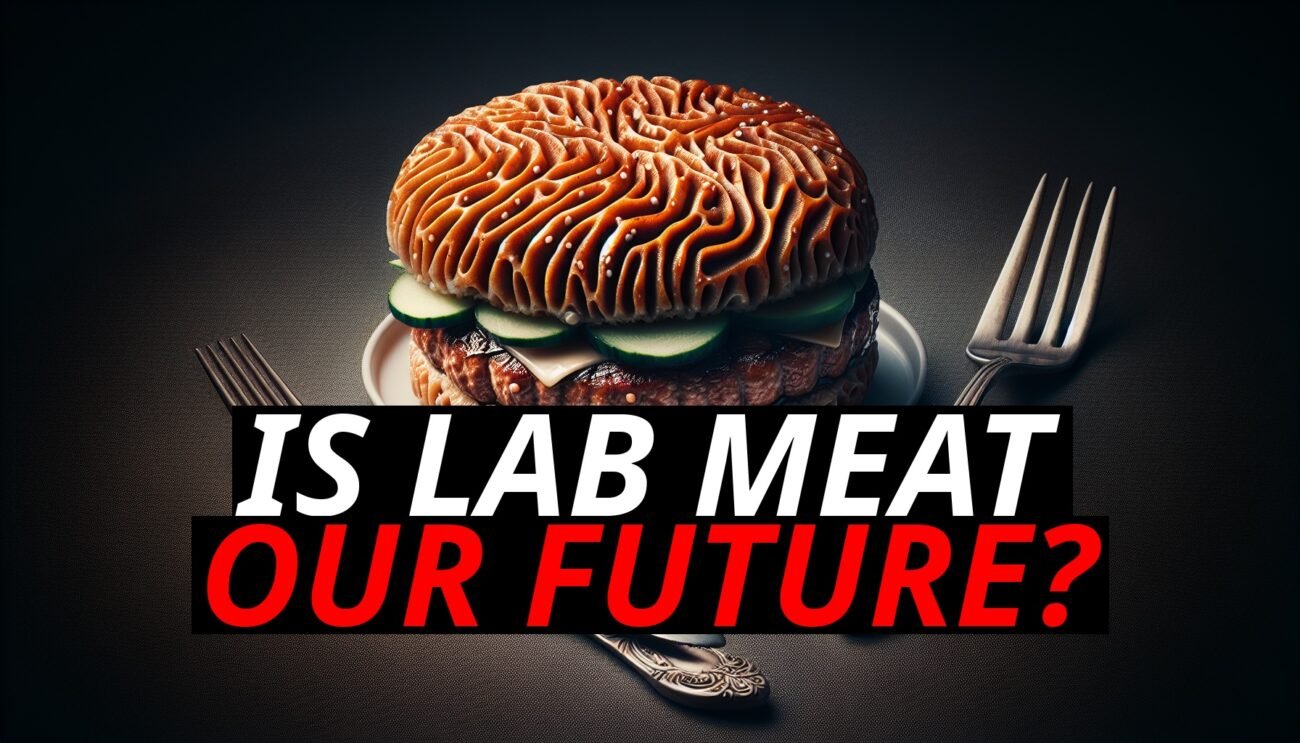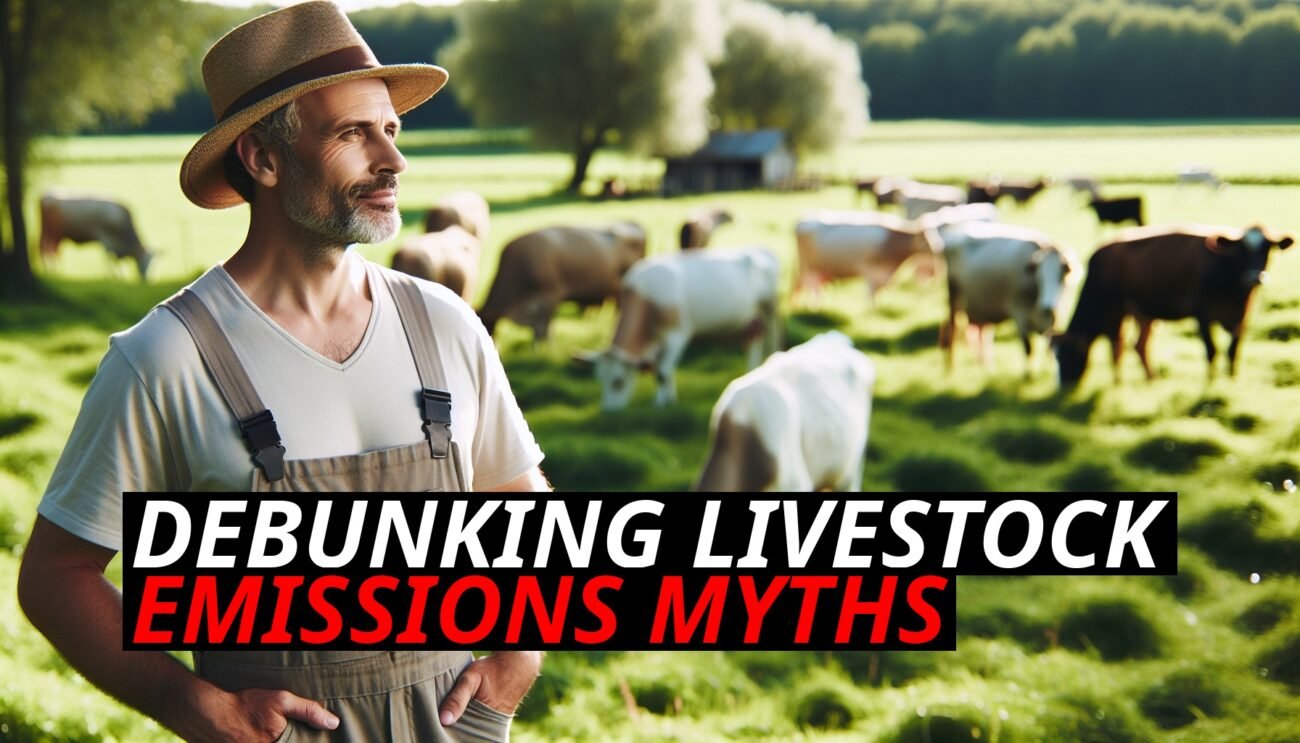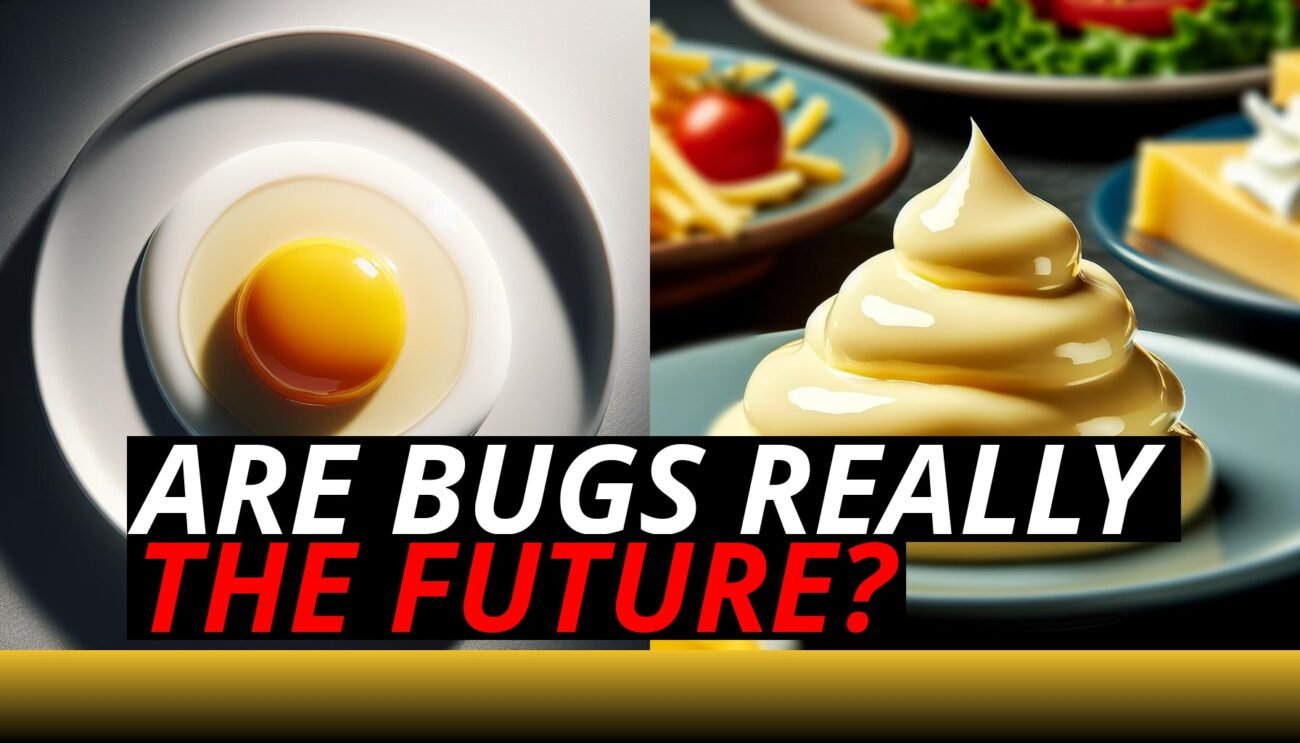Picture this: you’re scrolling through social media, and you see yet another post about how livestock is destroying the planet. Claims like, “Cows use too much land” or “Livestock consumes massive amounts of water” have become the go-to argument for those pushing alternatives like fake meat and bug farming. But are these claims actually true?
Let’s break down these environmental myths and explore why livestock, especially cows, play a far more natural role in the ecosystem than you’ve been led to believe.
The Land Myth: Do Livestock “Use” Too Much Land?
One of the most common arguments against livestock farming is that it uses up too much land, but this argument is fundamentally flawed. Cows and other livestock don’t consume land—they live on it, and in many cases, they improve it.
Grazing animals like cows don’t destroy the land; they are part of a natural process that maintains grasslands and rangelands. Their grazing helps keep the land healthy by:
- Stimulating plant growth: Grazing encourages plants to grow back healthier and stronger, maintaining the ecosystem.
- Spreading nutrients: Cows return organic matter to the soil through their manure, which acts as a natural fertilizer, enriching the soil with vital nutrients.
In fact, much of the land used for grazing cattle isn’t suitable for growing crops anyway. Cows can graze on rangelands, hillsides, and other areas where traditional farming simply isn’t possible. So instead of “wasting” land, livestock are making use of areas that would otherwise be barren.
The Water Myth: Do Cows Waste Water?
We’ve all seen the statistics: “It takes over 1,800 gallons of water to produce a single pound of beef!” But this statistic—and others like it—can be misleading. The truth is that livestock don’t consume water in the way people think.
When cows drink water, they don’t just hold onto it or use it up. They recycle it back into the environment. Let’s break it down:
- Cows urinate the water they drink, which returns moisture to the soil and helps maintain healthy grasslands and crops.
- The water used in livestock farming often comes from rainfall, which naturally supports the grass and plants that cows graze on. This water isn’t being diverted from other uses—it’s part of the natural hydrological cycle.
The idea that livestock “waste” water ignores the fact that this water is part of a renewable system. It’s constantly being recycled and reused, feeding back into the ecosystem rather than being depleted.
How Livestock Naturally Fit Into Ecosystems
Livestock like cows aren’t outsiders to the land—they’re integral to many ecosystems. When managed properly, they can actually help maintain the biodiversity of grasslands and support the natural cycles of the land.
- Soil Health and Fertility: Livestock help improve soil health through their manure, which adds essential nutrients to the ground. This natural fertilization process supports plant growth, leading to healthier ecosystems.
- Carbon Sequestration: Well-managed grazing systems can actually help capture carbon from the atmosphere. Grasslands that are grazed by livestock can sequester more carbon than land that’s left untouched or farmed for crops, making livestock a potential part of the climate solution rather than a problem.
- Biodiversity: Livestock grazing helps maintain the balance of plant species in grasslands. Without grazing animals, certain plant species would overgrow and dominate, reducing biodiversity. Cows help keep the ecosystem balanced by grazing on these dominant plants.
Why The Alternatives Don’T Add Up
Those pushing alternatives like fake meat or bug farming often point to livestock’s supposed environmental footprint, but they overlook the renewable nature of livestock farming when done right.
For example, bug farming and fake meat both require significant energy inputs, especially for climate-controlled environments, packaging, and processing. Livestock, on the other hand, are self-sustaining. They graze, fertilize the land naturally, and fit into the local ecosystem in a way that factory-produced alternatives simply don’t.
The idea that livestock farming is inherently bad for the environment ignores the positive role that cows and other animals can play. When managed well, livestock contribute to healthier soils, better carbon capture, and improved biodiversity—all while producing nutritious food.
The Importance Of Sustainable Livestock Management
The key to understanding why livestock farming isn’t the environmental villain it’s made out to be lies in sustainable management. It’s true that poorly managed livestock farms can contribute to deforestation, overgrazing, and environmental degradation. But sustainable practices, such as rotational grazing, can prevent these issues and make livestock farming a net positive for the environment.
Rotational grazing involves moving livestock between different pasture areas to avoid overgrazing and allow land to recover. This technique not only improves the health of the pasture but also reduces soil erosion and enhances water retention.
By using smart farming practices, livestock farmers can ensure that their animals are part of a healthy, thriving ecosystem rather than a detriment to it.
Conclusion: Livestock Aren’T The Enemy
The idea that livestock farming is inherently harmful to the environment is based on misunderstandings of how animals interact with land and water. Cows and other livestock don’t consume these resources in the way that industrial farming does. Instead, they’re part of a natural cycle that helps maintain ecosystems when managed responsibly.
So, before we rush to replace livestock with factory-produced alternatives like fake meat or bugs, it’s worth recognizing the value that well-managed livestock farming brings to the environment. With the right practices, animals like cows can be part of the solution to building a more sustainable food system, not the problem.
Let’s give the cows some credit—they might just be the environmental heroes we didn’t know we had.













